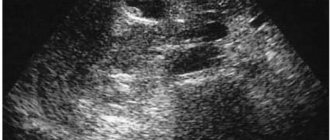intestinal microbiocenosis
vaginal microbiocenosis
dysbiosis
With the normal functioning of the entire body in general and the immune system in particular, a balance between beneficial and opportunistic microorganisms is maintained in the lumen of a woman’s intestines and vagina. With a deficiency of lactic acid in the vaginal lumen, favorable conditions are created for the proliferation of pathogens, the development of dysbiosis and other diseases of the genitourinary system.
Often, vaginal dysbiosis occurs in combination with intestinal dysbiosis or is its consequence.
Dysbacteriosis in pregnant women
Dysbacteriosis during pregnancy, as a rule, develops not only in the intestines, but also in the vagina. The disease may be accompanied by stool disturbances, constipation or diarrhea. The fight against constipation during pregnancy occurs even without the presence of dysbiosis, since the fetus puts pressure on the intestines, rectum and blood vessels, which leads to disruption of intestinal motility and bowel movements. The accumulation of feces causes bloating and other unpleasant symptoms, and also leads to intoxication of the body. Dysbacteriosis accompanied by diarrhea is more dangerous, since the inflammatory process and frequent loose stools are an irritant, which can cause uterine tone and, as a result, premature birth.
But such symptoms do not develop so often; usually a pregnant woman experiences discomfort in the abdomen associated with bloating, flatulence and pain.
How to cope with dysbiosis during pregnancy?
The key to successful treatment is modern therapy, although it has some features, since there are contraindications. First of all, a pregnant woman should review her diet and balance it as much as possible. During this period, it is allowed to use Linex and Bifidumbacterin, which help restore the composition of the intestinal microflora . The advantage of this therapy is that it does not provoke the development of side effects, but they can only be taken after a doctor’s prescription.
vaginal dysbiosis develops , the specialist prescribes the safest drugs possible - suppositories for vaginal use.
How to treat bacterial vaginosis during pregnancy
Treatment, which will be aimed at eliminating the symptoms of the disease, as well as normalizing the vaginal microflora, can only be prescribed by a doctor.
In the first half of pregnancy, as a rule, only local therapy is carried out, since systemic therapy is contraindicated. From the second half of pregnancy, it is possible to use systemic drugs.
Currently, there is a local drug on the market for the complex treatment and prevention of bacterial vaginosis - ActiGel Multi-Gyn gel.
One of the important advantages of the gel is its safety for pregnant and lactating women. The drug is based on a patented complex of bioactive polysaccharides - 2QR-complex, which is isolated from aloe, known for its antibacterial properties.
Causes and symptoms
Dysbacteriosis during pregnancy can develop in the presence of the following negative factors:
- reduced immunity;
- helminthiasis;
- unbalanced diet;
- frequent stressful situations;
- taking antibacterial drugs;
- chronic fatigue.
Since during pregnancy the emotional background of a pregnant woman is not stable, this often leads to a disruption in the composition of the intestinal microflora.
In pregnant women, dysbiosis can manifest itself in the following symptoms:
- pain in the abdomen;
- decreased appetite;
- nausea;
- increased gas formation;
- belching;
- flatulence;
- change in consistency and color of stool;
- constipation or diarrhea.
Since many pregnant women complain of such symptoms, women rarely pay attention to them, attributing them to natural processes during such a period. Therefore, the detection of the disease in most cases occurs by accidental diagnosis, and treatment begins only in the acute course of the disease.
It is very important to start treatment in a timely manner, since severe forms of the disease lead to hypovitaminosis, which is caused by a decrease in the body’s immune defense.
Causes of vaginal dysbiosis
Normally, the vaginal mucosa is populated by lactobacilli and bifidobacteria. There is a whole list of factors that could potentially cause an imbalance between beneficial and opportunistic microflora in the vaginal lumen. These factors include:
- immunodeficiency conditions caused by a lack of vitamins and microelements, as well as concomitant chronic diseases (including infectious ones);
- failure to comply with the rules of personal intimate hygiene;
- long-term use of intrauterine contraception;
- completing a course of antibiotic therapy;
- using panty liners, frequent use of sanitary tampons and wearing underwear made of synthetic materials;
- taking hormonal contraceptives;
- atrophic changes in the vaginal mucosa;
- frequent effects of stress on the body;
- previously suffered acute or chronic diseases of the genitourinary system;
- imbalance of sex hormones in the body, which led to the development of amenorrhea, oligomenorrhea and other disorders of menstrual function;
- use of hygiene and cosmetic products containing large amounts of preservatives, dyes, fragrances;
- metabolic diseases, including diabetes and obesity;
- poor nutrition, poor diet, alcohol abuse.
Danger to the fetus
Dysbacteriosis during pregnancy not only causes a lot of inconvenience for a woman, but is also a dangerous condition for the health of the unborn baby. The most dangerous thing for a child is vaginal dysbiosis, against the background of which there may be an increased tone of the uterus, which can cause termination of pregnancy.
Intestinal dysbiosis and uterine tone also irritate the uterine organ, so any type of microflora disorder requires timely treatment.
If the disease is started, the following problems may arise in the future:
- the fetus becomes infected with fungi, E. coli, staphylococci or streptococci, which often leads to the development of pathological processes, often life-threatening;
- in case of dysbiosis in a woman, the fetus may not receive the necessary nutrients and microelements due to a violation of their absorption by the woman’s body, which can cause disturbances in the development of the child;
- During childbirth, the risk of injury increases due to decreased elasticity of the birth canal.
But one of the most unfavorable complications is premature birth or termination of pregnancy, if the disease takes a severe course, complicated by an inflammatory process, affecting the adjacent ovaries and uterus.
Symptoms of vaginal dysbiosis
At the initial stage of development of vaginal microbiocenosis , symptoms of the disease may be completely absent. As the number of pathogenic microorganisms increases, the following clinical manifestations of dysbiosis come to the fore:
- itching of the external genitalia;
- discomfort when urinating;
- the appearance of copious grayish vaginal discharge with an unpleasant odor;
- discomfort and pain during intimacy.
Diagnosis, treatment, prevention
A preliminary diagnosis is established based on the pregnant woman’s complaints, clinical picture and after examination by a gastroenterologist and gynecologist. An accurate diagnosis is established only after taking stool tests for intestinal dysbiosis and smear tests for violations of the vaginal microflora.
Only after identifying the causative agent of the disease is treatment prescribed, which has some features due to the presence of contraindications for taking medications. Therefore, first of all, a woman needs to normalize her diet, exclude fried, smoked and salty foods, and give preference to lean foods. Pregnant women are allowed to use a medication such as Linex, which helps normalize the intestinal microflora without causing side effects. Treatment should occur under the supervision of a doctor, since the reaction of a pregnant woman’s body to a particular drug is unknown.
When diagnosing vaginal dysbiosis during pregnancy, it is necessary to use befidobacteria and lactobacilli, which can suppress harmful bacteria in the shortest possible time without affecting the development of the fetus. If inflammatory processes are detected in the vagina, the doctor prescribes antibacterial drugs, which are selected individually based on the duration of pregnancy.
No less important is the prevention of dysbacteriosis, which should begin in the process of planning pregnancy. Therefore, during preparation, it is necessary to take an analysis of the intestinal and vaginal microflora, which will allow you to find out the current condition. For the purpose of prevention, drugs are prescribed that can protect the microflora from the negative effects of drugs, including antibiotics.
Therapy and prevention also include medications and the use of foods that strengthen the immune system.
Dysbiotic conditions during pregnancy and methods for their correction
IN
In recent decades, opportunistic infections caused by opportunistic microorganisms have occupied a special place in the practice of clinicians of various specialties. In many countries of the world, including Russia, there has been an increase in vaginal infections, which firmly occupy a leading place in the structure of obstetric and gynecological morbidity.
The introduction of modern technologies in clinical microbiology has made it possible to expand research and show that the negative impact of environmental factors on the microflora of the macroorganism of various localizations, including the vagina and intestines, leads to a variety of pathologies of both inflammatory and non-inflammatory origin. Despite significant advances achieved in the diagnosis, treatment and prevention of dysbacteriosis, their frequency does not have a clear downward trend. The latter is also associated with the growth of immunodeficiency conditions against the background of deteriorating environmental conditions, poor nutrition, frequent stress, a pharmacological boom with the uncontrolled use of drugs, primarily antibiotics, etc. Most often, infection is caused by several pathogenic factors - viruses, microbes, fungi, protozoa , which cause diseases similar in clinical course, but different in pathogenesis and treatment methods.
Infection is particularly important
acquired in obstetric practice, as
they are a common cause of inflammatory complications during pregnancy, childbirth and the postpartum period
. Complications of the gestational period and childbirth associated with various disorders of the vaginal microcenosis include the threat of miscarriage, spontaneous miscarriages, premature birth, chorioamnionitis, untimely rupture of amniotic fluid, the birth of children with low body weight, chronic hypoxia and/or signs of intrauterine infection in the postpartum period the occurrence of wound infection of the birth canal, endometritis.
According to the literature, 75% of women of reproductive age have at least one episode of vaginal candidiasis
.
Currently, 196 species of fungi of the genus Candida
.
Members of the genus Candida
are yeasts related to
Ascomycetes
.
The genus Candida
includes various species (
Candida spp.
), among which the main ones as causative agents of candidiasis are:
Candida albicans, Candida tropicalis, Candida parapsilosis, Candida glabrata, Candida dubliniensis, Candida lusitaniae, Candida krusei.
Of these, more than 27 species are isolated from human mucous membranes. According to summary data, Candida albicans
found in the intestines in 20–50% of healthy people, on the oral mucosa in 20–60%, in the vagina in 10–17% of non-pregnant women.
Vaginal candidiasis in pregnant women occurs on average in 30–40% of cases. Before childbirth, this figure can reach 44.4%. Candida spp
.
They are a component of microflora that is symbiont for humans. In 10–25% of the population without clinical signs of fungal infection, Candida spp
.
are inconsistently detected in the oral cavity, in 65–80% - in the intestinal contents. Candida spp
. are found in the detritus of gastroduodenal ulcers in approximately 17% of cases.
According to modern ideas, under normal conditions the main “habitat” of Candida spp.
.
in the human body is the intestines. The proportion of these fungi in the intestinal microbial population is negligible. Growth of Candida spp
. in the human body it is partly regulated due to the work of the immune system. The main place in this process is occupied by the links of nonspecific immunity - mononuclear phagocytes (monocytes/macrophages) and polymorphonuclear leukocytes.
Very important role in limiting the growth of Candida
also belongs to bacteria - intestinal symbionts. Normal microflora inhabiting the lumen of the gastrointestinal tract produces substances with antibacterial activity (in particular, bacteriokines and short-chain fatty acids), which prevent the introduction of pathogenic microorganisms and excessive growth, the development of opportunistic flora. Escherichia coli, enterococci, bifidobacteria and lactobacilli have the most pronounced antagonistic properties.
The term “candidiasis” implies a pathological process, the basis of which is the excessive growth of Candida, primarily in the gastrointestinal tract and secondarily in other areas (on the mucous membrane of the genitals, bronchi, and parenchymal organs).
It should be especially noted that disorders of the microcenosis of the vagina and intestines are interrelated. It has also been established that candidiasis of the genitourinary organs and intestines is 2-3 times more common during pregnancy than in non-pregnant women
. Such a high incidence of candidiasis during gestation is due to a number of factors: changes in hormonal balance; accumulation of glycogen in the epithelial cells of the vagina; immunosuppressive effect of high levels of progesterone and the presence of immunosuppressive factor associated with globulins in the blood serum. A direct relationship has been established between gestational age and the incidence of vaginal and intestinal candidiasis.
Vaginal candidiasis during pregnancy is characterized by an asymptomatic course and frequent relapses. Due to the wide spread of candidiasis infection, the increase in the number of risk factors that determine its development, the emergence of new data on pathogenesis against the background of immunodeficiency states, the issues of prevention and treatment of candidiasis currently pose a very difficult problem for practical solution. This problem becomes especially important during gestation due to the high risk of fetal damage. Pregnant and postpartum women with vaginal candidiasis can be a source of both intrauterine and postnatal infection of newborns. Over the past 20 years, the incidence of candidiasis among full-term newborns has increased from 1.9% to 15.6%.
It is important to know the pathogenesis of this infection. The following stages are distinguished in the development of candidiasis:
attachment (adhesion) of fungi to the surface of the mucous membrane with its colonization, penetration (invasion) into the epithelium, overcoming the epithelial barrier of the mucous membrane, entry into the connective tissue of the lamina propria, overcoming tissue and cellular protective mechanisms, penetration into blood vessels, hematogenous dissemination with damage to various organs and systems.
With vaginal candidiasis, the infectious process is most often localized in the superficial layers of the vaginal epithelium. At this level, the infection can persist for a long time due to the emergence of a dynamic equilibrium between fungi, which cannot penetrate into the deeper layers of the mucous membrane, and the macroorganism, which restrains this possibility, but is not able to completely eliminate the pathogen. Violation of this balance leads either to an exacerbation of the disease, or to recovery or remission.
Drugs used in pregnant women for the treatment of vaginal candidiasis must meet the following requirements: low toxicity to the fetus and mother, effectiveness, tolerability, minimal frequency of development of resistance in pathogens, etc. Intravaginal use of antimycotics should be considered preferable due to a sharp reduction in systemic absorption of drugs, which minimizes the potential for undesirable effects. In addition, a reduction in clinical symptoms and recovery occurs faster. There are many medications and treatment regimens for vaginal candidiasis during pregnancy. However, there is no optimal drug that would meet all the requirements and be 100% effective.
Drugs for the treatment of vaginal candidiasis
are divided into the following groups:
1. Antibiotics (nystatin, levorin, pimafucin).
2. Imidazoles (clotrimazole, ketoconazole, miconazole).
3. Triazoles (introconazole).
4. Combined drugs.
5. Other drugs.
In the treatment of vaginal candidiasis, it has been established that the effectiveness of clotrimazole is 70–82%, miconazole - 80%, ketoconazole - 68%, pimafucin - 92.8%. However, the use of some antifungal drugs due to their possible teratogenic effects during gestation is contraindicated.
When treating vaginal candidiasis, it is necessary to observe the principle of an individual approach to each pregnant woman, taking into account the gestational age, clinical form of the disease, and the results of microbiological analysis. As a rule, therapy is prescribed after 12 weeks of gestation, in case of acute form of vaginal candidiasis - 1 vaginal suppository once a night for 6 days and in case of relapse of chronic infection - in the same dosage, lasting 9 days. At the same time, sexual rest is observed for 2–3 weeks, and the spouse is treated (local 1% Canison ointment or other antifungal agent). After treatment, restoration of the vaginal microcenosis begins. To do this, bifidumbacterin is applied topically (5–10 doses per day) in the form of vaginal applications for 8 days or acylact in the form of vaginal suppositories, 1 at night 1 time for 10 days.
Carrying out antimycotic treatment
allows to reduce complications of the gestational period and childbirth.
Insufficient effectiveness of therapy is noted only in cases where a woman suffers from long-term recurrent vaginal candidiasis, indicating repeated courses of treatment with various drugs, which, apparently, can lead to species selection of Candida
resistant to traditionally used drugs.
Intestinal dysbiosis accompanying vaginal candidiasis
characterized by excessive microbial contamination of the small intestine and changes in the microbial composition of the large intestine. Disruption of microbiocenosis occurs to one degree or another in most patients with pathology of the digestive organs with the presence of secretory-motor disorders and foci of inflammation; after acute intestinal infections; with long-term use of medications that affect the secretion of the digestive glands, motility and regeneration of the epithelium of the digestive tract, and primarily antibiotics; with inadequate nutrition (including separate ones), exotic diets.
Excessive bacterial growth in the small intestine and changes in the composition of the colonic microflora are accompanied by a number of symptoms and syndromes that contribute to the clinical manifestations of the diseases underlying their development.
Factors that determine the formation of clinical symptoms of intestinal dysbiosis include:
1. Excessive production of organic acids as a result of microbial hydrolysis of food components, which is accompanied by an increase in the osmolarity of intestinal contents; a decrease in the level of intestinal pH with inactivation of digestive enzymes; disruption of digestion and absorption processes. In this case, clinical symptoms are abdominal pain, flatulence, osmotic diarrhea, weight loss, hypovitaminosis, and anemia.
2. Premature bacterial deconjugation and excessive passage of bile acids, as well as hydroxylation of fatty acids into the colon, are accompanied by stimulation of intestinal secretion of mucus and water with loss of fluid and electrolytes; structural disorders of the intestinal mucosa; violation of hydrolysis and absorption of dietary fat. Clinical symptoms in this case are secretory diarrhea (not relieved after 24 hours of fasting), weight loss (only with small intestinal disorders), and the development of inflammatory changes in the intestinal mucosa.
3. Motor disorders of various parts of the intestine, the most common of which are: duodenal hypertension, characterized by the presence of bitterness in the mouth, airy belches, a feeling of rapid satiety, heaviness and pain in the epigastrium, nausea and occasional vomiting, which brings relief; hypermotor dyskinesia of the small and/or large intestine, the main symptom of which is painless diarrhea; spastic dyskinesia of the colon with constipation, bean-shaped stool and abdominal pain.
One of the ways to eliminate intestinal dysbiosis is to influence the pathogenic microbial flora with metabolic products of normal microorganisms. These drugs include Hilak forte
, which is a sterile concentrate of metabolic products of normal intestinal microflora (lactic acid, lactose, amino acids, fatty acids). The components of Hilak Forte, in addition to creating conditions for the growth of normal microflora, are a source of nutrition for the intestinal epithelium, promote its regeneration and normalization of functions, and participate in the processes of adaptation of the receptor apparatus of the colon to its contents, which is extremely important for irritable bowel syndrome.
The drug regulates the balance of intestinal microflora. Promotes the regeneration of the physiological intestinal flora biologically by normalizing and maintaining pH values in the gastrointestinal tract within the physiological norm, which creates unfavorable conditions for the life of pathogenic microorganisms and ensures intestinal sanitation. Against the background of accelerating the development of normal intestinal symbionts under the influence of the drug, the natural synthesis of vitamins B and K is normalized, and the physiological functions of the mucous membrane of the gastrointestinal tract are improved. The short-chain volatile fatty acids contained in the preparation ensure the regeneration of damaged intestinal microflora in infectious diseases of the gastrointestinal tract, stimulate the regeneration of epithelial cells of the intestinal wall, and restore the disturbed water and electrolyte balance in the intestinal lumen.
In the first days of treatment, the drug is prescribed 40–60 drops 3 times a day. After the condition improves, the initial daily dose of Hilak Forte can be reduced by half. The drug is taken orally before or during meals in a small amount of liquid (excluding milk).
Indications for the use of Hilak Forte are: disturbances of the physiological intestinal flora during and after treatment with antibiotics, sulfonamides, radiation therapy; digestive insufficiency syndrome, dyspepsia; diarrhea, flatulence, constipation; gastroenteritis, colitis; senile intestinal syndrome (chronic, atrophic gastroenteritis); disorders of the gastrointestinal tract caused by climate change, etc.
We assessed the effectiveness of correction of dysbiotic conditions of the gestational period. To achieve this goal, 47 pregnant women with vaginal and intestinal candidiasis were treated. The study included women in the second and third trimesters of pregnancy aged 19 to 34 years. The simultaneous presence of other “nonspecific” bacteria was not a criterion for excluding patients. The diagnosis of candidiasis was confirmed clinically and laboratory. During the examination, the external genitalia were examined, edema, erythema, leukorrhea were detected, vaginal pH was measured using a pH meter; The patient's complaints (itching, burning, dysuria, dyspareunia) were clarified. All symptoms, both subjective and objective, were assessed on a numerical semi-quantitative scale; A bacteriological analysis of vaginal secretions was carried out. All pregnant women had the above-mentioned clinical symptoms of intestinal dysbiosis. It has been established that treatment of vaginal candidiasis together with normalization of intestinal function allows adequate correction of dysbiosis in the body of pregnant women.
Thus, therapy for dysbiotic conditions during pregnancy should be comprehensive. Timely treatment can reduce the incidence of complications during gestation, childbirth, and the postpartum period.









